
Juliia
@t_Juliia
What symbols does the trader recommend buying?
Purchase History
پیام های تریدر
Filter

Juliia
BTC market snapshot
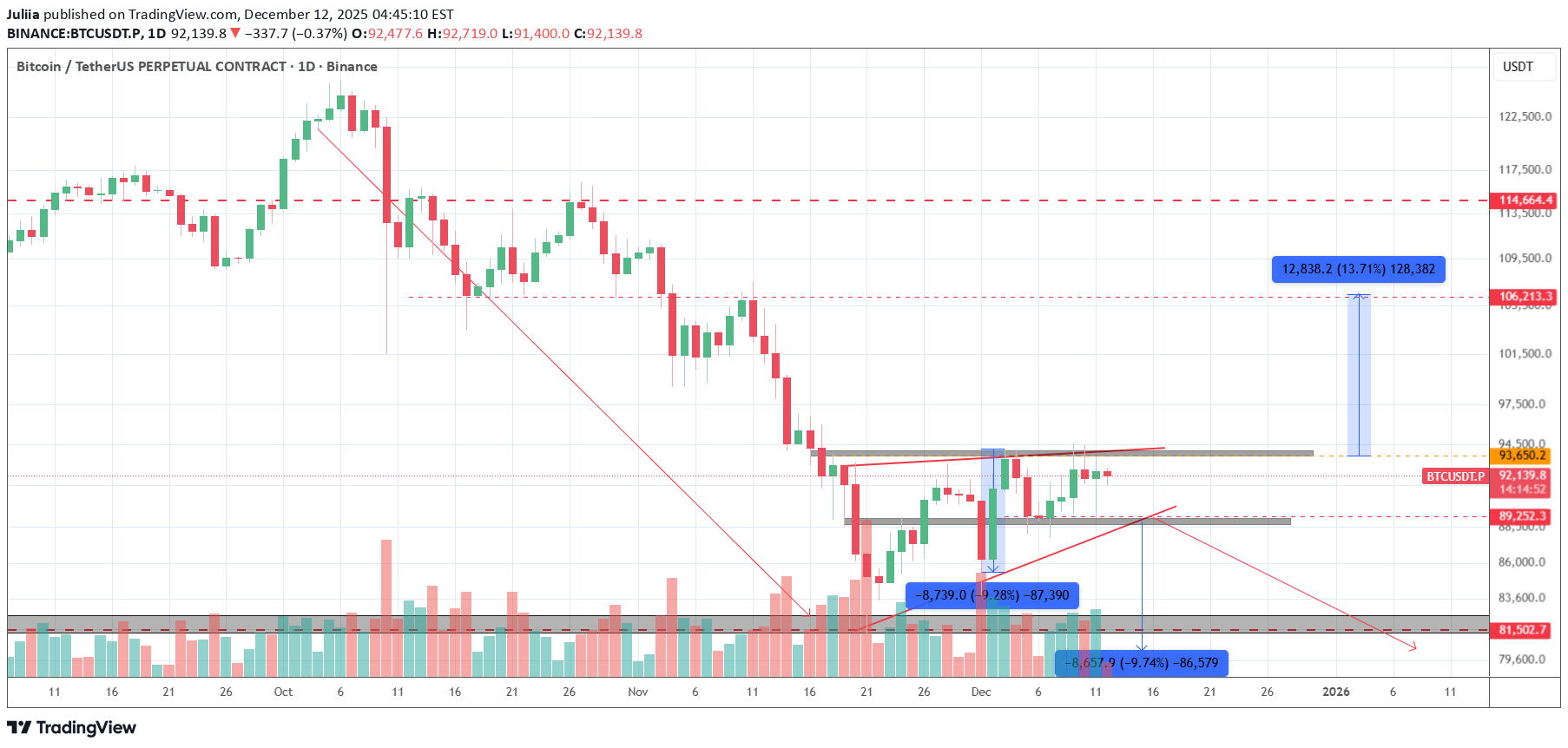
We’re seeing a clearly formed rising wedge on BTC — a continuation pattern — with a target around 80K. Rising Wedge in a Downtrend — Key Rules ▪️ Context: only valid when it forms after a decline. ▪️ Both trendlines slope upward, but the upper one rises more slowly → wedge narrows. ▪️ Volume decreases as price climbs. ▪️ The advance is weak and shallow — a “crawling” uptrend. ▪️ Breakouts occur downward most of the time, with volume expansion. ▪️ Target: the height of the wedge projected downward from the breakdown. ▪️ Strong confirmations: divergence + retest of the upper trendline. We also have strong local resistance at 93,500. According to Thomas Bulkowski’s statistics: Rising Wedge in a Downtrend — Performance — Downward breakouts: ~72–78% — Hitting the measured target: ~55–65% — False breakouts to the upside: ~20–25% A breakout above 93,500 would give a chance to invalidate the bearish structure and open the path toward 106K. For now, I’m maintaining a long-term bullish bias.

Juliia
UNI/USDT Long Set-up

— A falling wedge (reversal pattern) has formed, supported by daily-timeframe bullish divergence and a retest of major global support. — Entry: $5.58 (market buy) — Stop: $5.28 (-5% price movement from entry; not percentage loss) — Target: $6.50 Risk per trade: 0.5% of total account (this is the actual potential loss) Position size: 10% of account, 10x leverage RR: 1:3.3

Juliia
XRP/USDT Long
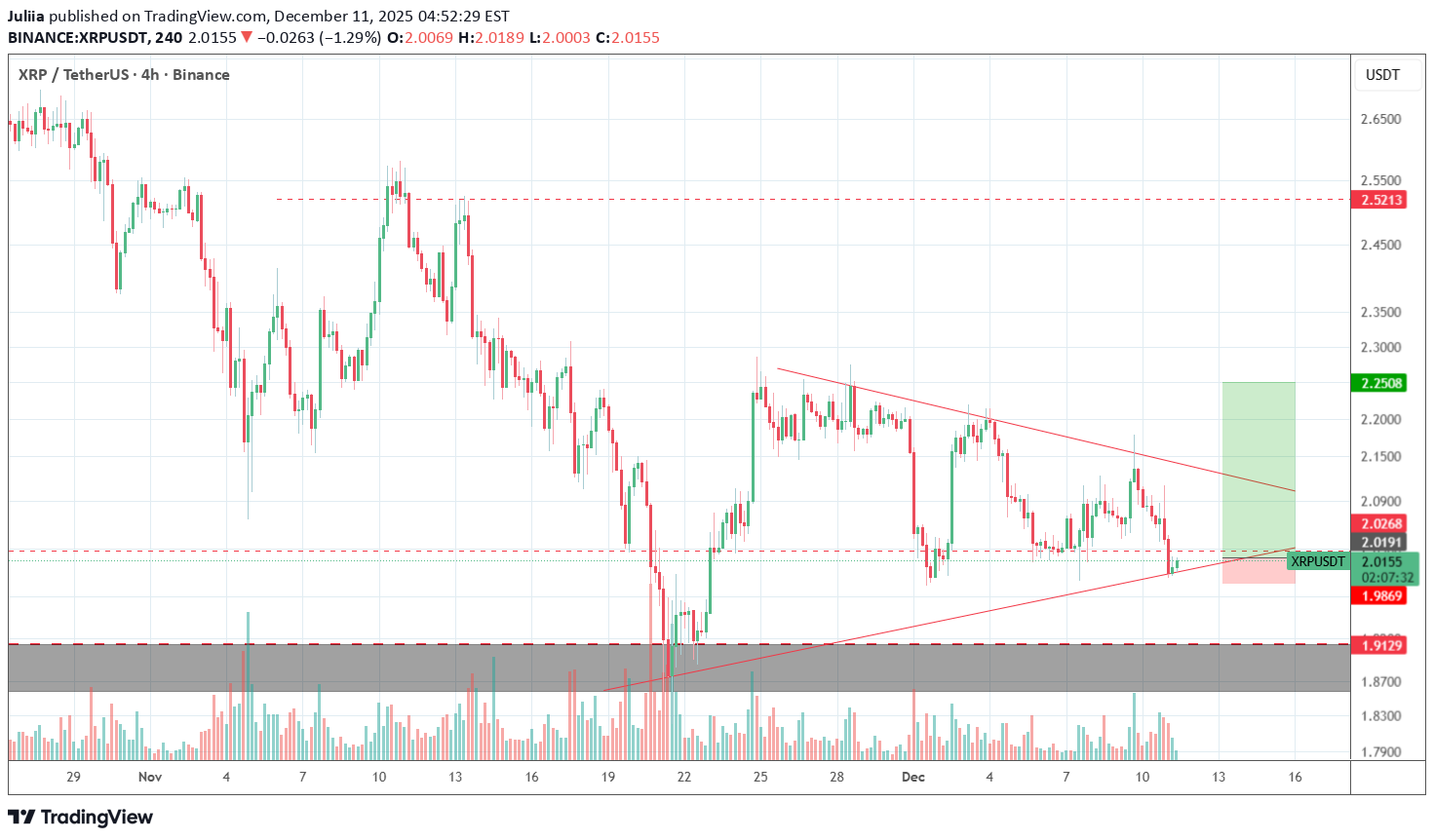
— Strong $2 support retested, higher-timeframe divergence in play, and a retest of the lower accumulation trendline. The rate-cut news has already been priced in. The cut itself means liquidity is coming. — Entry: $2.015 (market buy) — Stop: $1.98 (-1.65% price movement from entry; not percentage loss) — Target: $2.25 Risk per trade: 0.3% of total account (this is the actual potential loss) Position size: 15% of account, 10x leverage RR: 1:7

Juliia
CAKE/USDT Long Setup
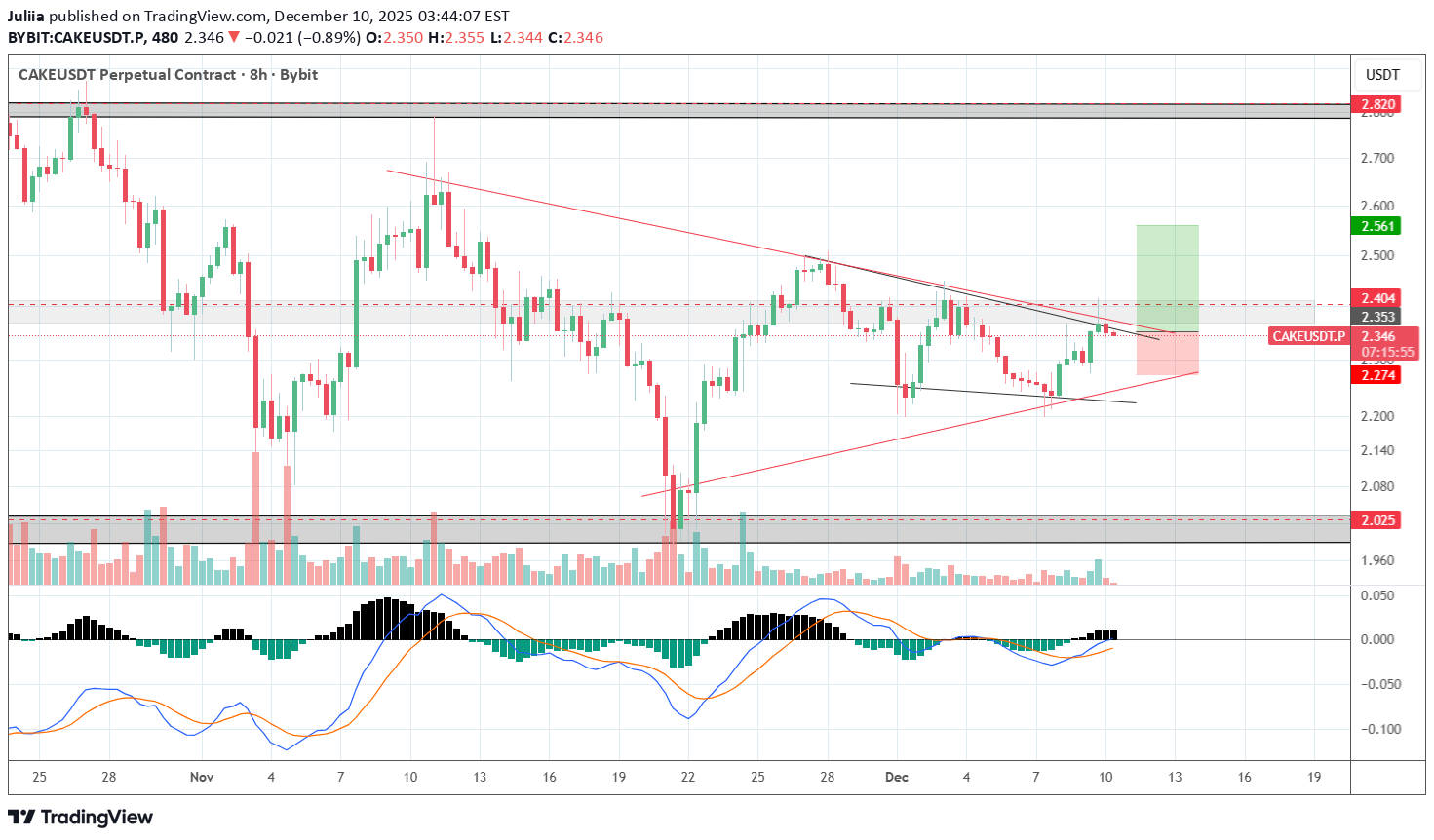
— Multiple resistance tests, decreasing volatility, price compression under the level — Entry: Conditional order (NOT market) Trigger: $2.356 Limit buy: $2.358 — Stop: $2.265 — 3.5% is the price movement from entry to stop, NOT the loss percentage — Target: $2.55 Risk per trade: 0.5% of the total account — this is the percentage of potential loss Position size: 15% of the total account, 10x leverage RR: 1:2.25

Juliia
BTC: $105K on the Horizon
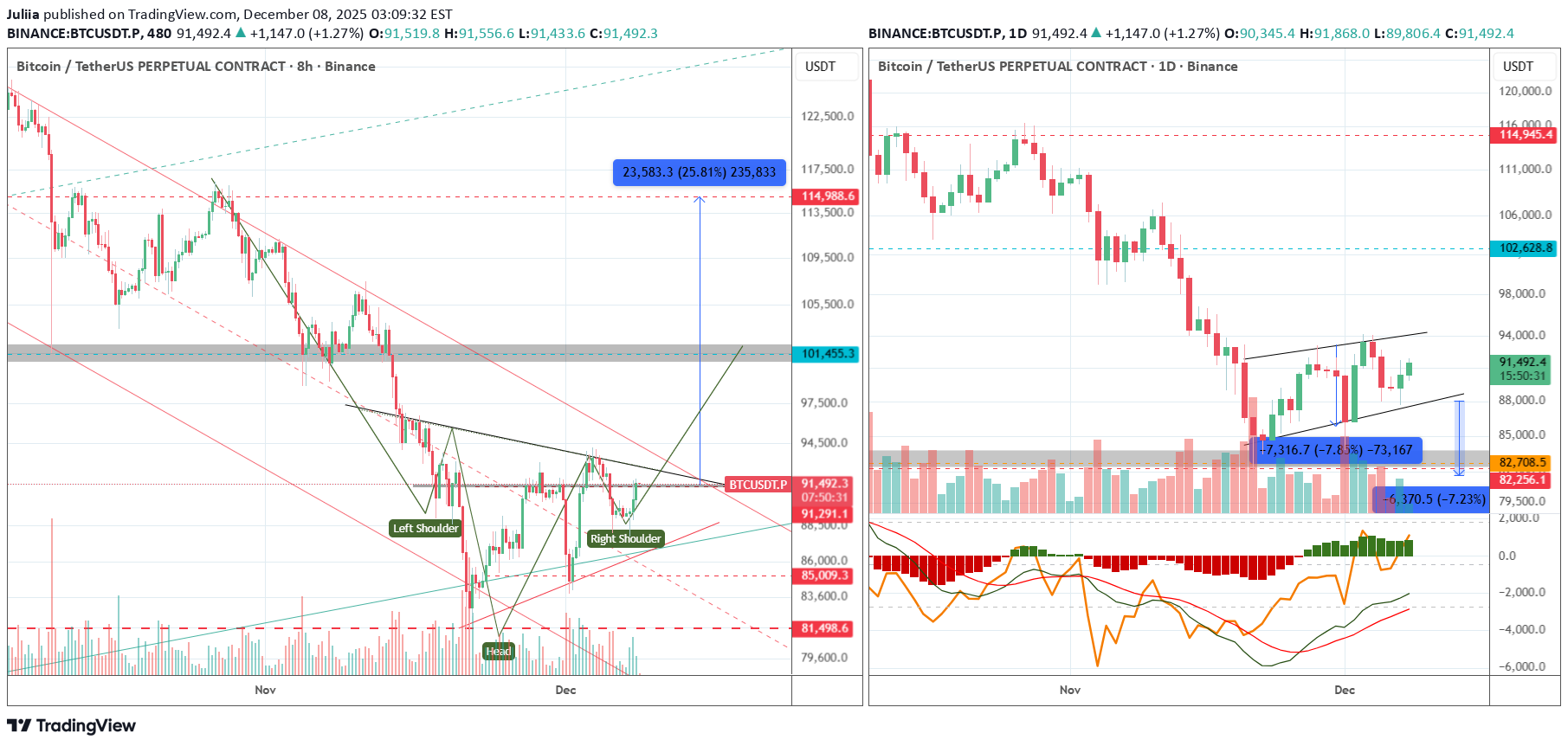
I’m assuming we’re seeing a reversal Head and Shoulders forming on BTC, with a potential retest of 106k. In that case, there’s a strong chance of seeing a new all-time high. I opened a few scout positions and still believe the bulls are in control. A retest of the local low (around the 80k zone) is possible, but I’m staying in long positions for now. The price action from here will be telling: if we can move up right away, the probability of a new high increases sharply. Stepping away from the hourly charts — now we wait.

Juliia
فرصت خرید جذاب XRP: تحلیل تکنیکال و سیگنال ورود با پتانسیل سود 4.5 برابری!
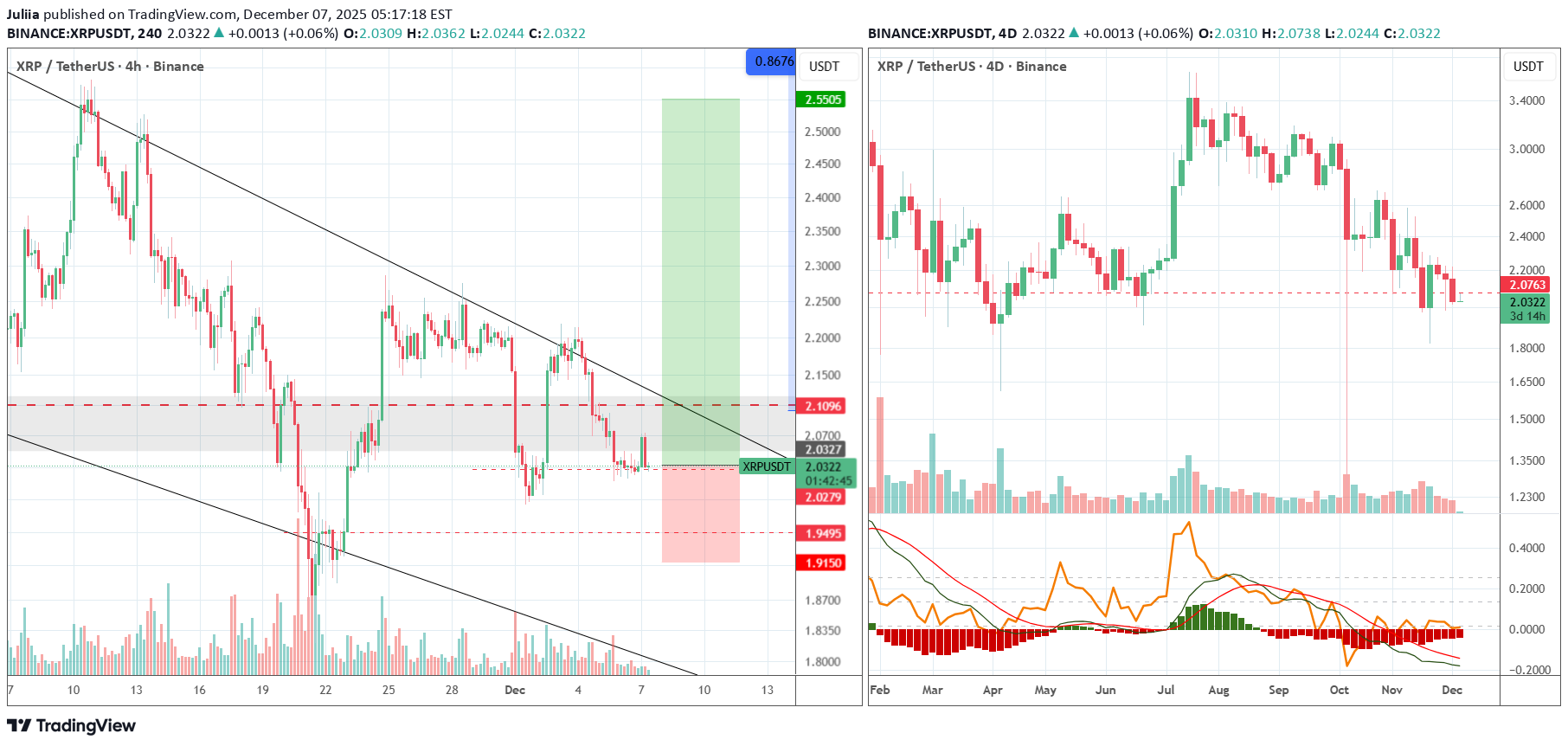
— A falling wedge pattern is forming (a reversal technical formation), supported by bullish convergence on the 4D/3D timeframes. Price is sitting under resistance but right at the lower boundary of the range formed after the previous rally, which makes a consolidation before continuation of the broader trend quite possible. — Entry: $2.03 (market buy) — Stop: $1.91 — 5.5% is the price distance from entry to stop, NOT the percentage loss — Target: $2.55 Risk per trade: 0.8% of the total account — this is the actual percentage loss Position size: 15% of the total account, 10x leverage RR: 1:4.5

Juliia
سیگنال خرید قوی ETC/USDT: آیا فرصت ترید طلایی در راه است؟ (ریسک کم، سود بالا)

— Technical formation: wedge, supported by divergence on higher timeframes, dangerously close to the level, but the movement has not developed for almost a month. Strong short signal on Bitcoin has already played out. — Entry: $13.125 Market buy — Stop: $12.55 – 4.5% (this is the percentage of price movement from entry to stop, NOT percentage of loss) — Target: $16.5 Risk per trade: 1% of total deposit – this is the actual percentage of loss Position size: 20% of total deposit, leverage 10x RR 1:6

Juliia
سیگنال خرید قوی UNI/USDT: ورود در 6.10 دلار با هدف سود 4 برابری!
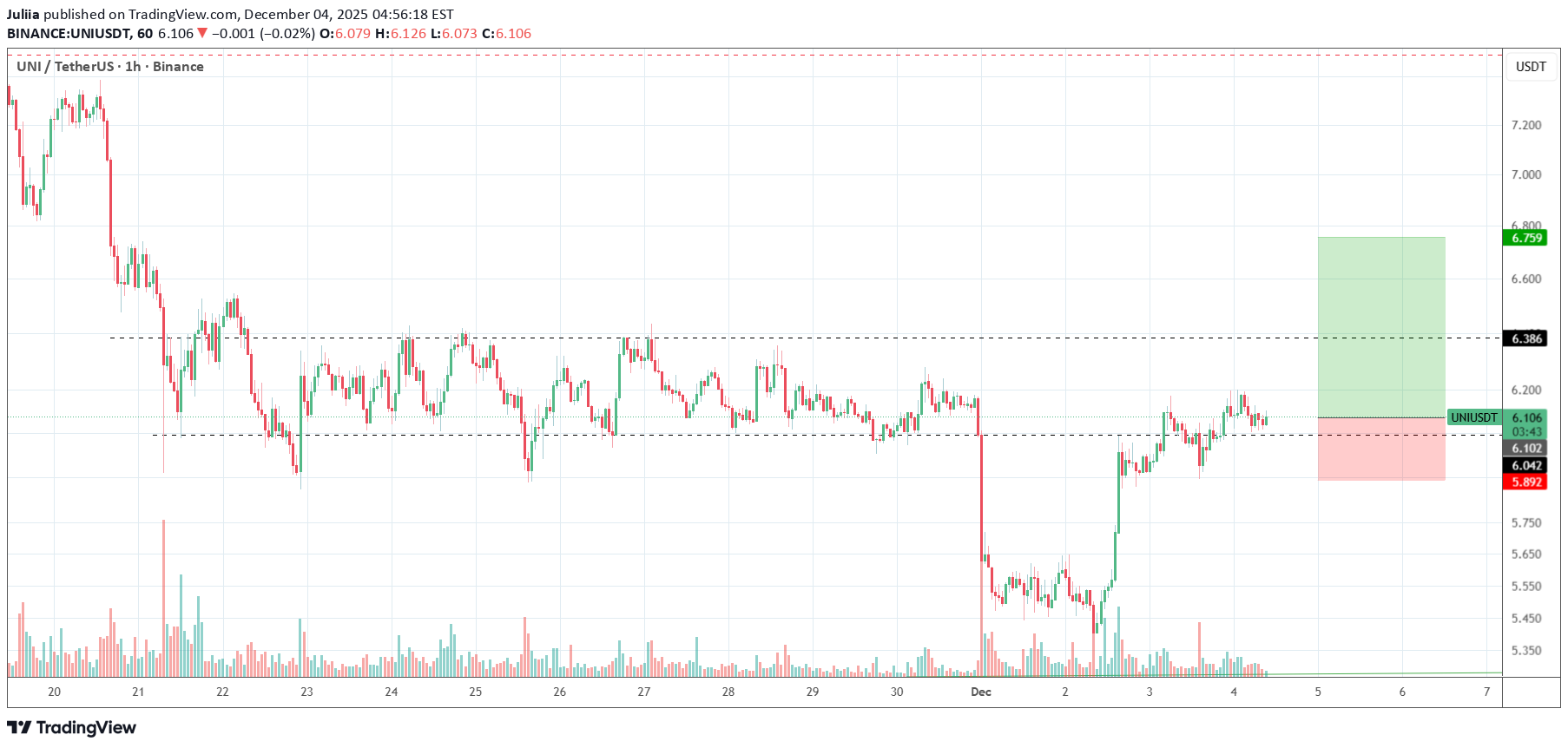
- Return into the range with a false breakout; potential move toward the next resistance level. — Entry: $6.10 (Market buy) — Stop: $5.92 — a 2.8% price move from entry to stop (NOT percentage loss) — Target: $6.75 Risk per trade: 1% of total account — this is the actual loss percentage. Position size: 35% of total account, 10x leverage. RR: 1:4

Juliia
هدف بیت کوین ۱۰۰ هزار دلار است: تحلیل تکنیکال و پیشبینی صعودی با احتمال رسیدن به ۱۱۰ هزار دلار

BTC is technically forming a double bottom on the daily timeframe (a trend-reversal pattern). The target sits around 100K. With the upcoming Fed meeting and a potential rate cut, we could break out toward 105K, and I wouldn’t rule out a move to 110K — a test of the 50/200-day MAs — as the market shifts into short-trend expectations.

Juliia
سیگنال خرید بیت کوین کش (BCH/USDT): آماده جهش به بالای ۵۶۰ دلار!

— Multiple approaches to the resistance level, reclaim of the 50/200 MA on the daily timeframe, strong and prolonged accumulation that formed after the previous rally. High probability of breaking through the $560 resistance area. — Entry: $533 (Market buy) — Stop: $510 — 4.5% price movement from entry to stop (NOT percentage loss) — Target: $580 Risk per trade: 1% of total account — this is the percentage of potential loss. Position size: 10% of total account, 10x leverage RR: 1:2Stop moved to BE
Disclaimer
Any content and materials included in Sahmeto's website and official communication channels are a compilation of personal opinions and analyses and are not binding. They do not constitute any recommendation for buying, selling, entering or exiting the stock market and cryptocurrency market. Also, all news and analyses included in the website and channels are merely republished information from official and unofficial domestic and foreign sources, and it is obvious that users of the said content are responsible for following up and ensuring the authenticity and accuracy of the materials. Therefore, while disclaiming responsibility, it is declared that the responsibility for any decision-making, action, and potential profit and loss in the capital market and cryptocurrency market lies with the trader.